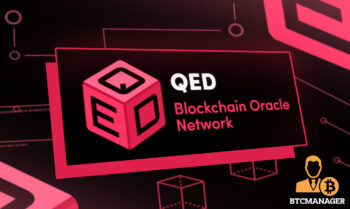2019-7-5 17:59 |
CoinMarketCap’s block explorer guide will have you navigating blockchain data like the coolest kid on the block.
At CoinMarketCap, we have made it a mission to clearly communicate blockchain and crypto concepts in conjunction with providing data in abundance. Education is one way we empower individuals to make informed decisions, in addition to providing them with an array of tools to do so effectively.
CoinMarketCap was founded on the vision to offer free, up-to-date cryptocurrency information for the global crypto community. On CMC, users have access to a wealth of cryptocurrency market data, can obtain official project resources, as well as track their favorite crypto on different exchanges. Using the CMC mobile app, users can build their portfolio for easy access and stay updated anywhere they go. We recently updated our API, which allows developers to incorporate our data into their services and platform. Now, we have supplemented our market data and resources with a crucial set of information: blockchain data.
What’s a Block Explorer and Why is it Important?A block explorer is an online browser where users can view transactions that have taken place on the blockchain, find out how active the network is and track transaction volume, among other useful information. Think of it as a window into the blockchain world where payments, records, and block activities are accessible to the public, while sensitive data such as user identity is protected by cryptography.
Simply put, CoinMarketCap’s block explorer presents data from four perspectives: a blockchain overview, a block view, a transaction view, and an address view. Depending on the user’s search needs, one overview will be more relevant than another. The queries made on the block explorer return a specific result, such as block 536254, instead of a list of choices that you might see when searching for something on Google. Thus a key skill needed to master the block explorer, is knowing how to search for the data you need. In a few paragraphs below, we have detailed all the items you can search for on the block explorer.
Testing Crypto-Savvy Levels: 1, 2, 3Acquiring blockchain and cryptocurrency knowledge is a constant, lifelong journey for everyone. Coincidentally, the information available on block explorers can also be used as a casual benchmark of possessing a working knowledge of blockchain, cryptocurrency, and cryptography. Utilizing a blockchain browser requires practical knowledge of blockchain and crypto. But not to worry; those who already have a grasp of the fundamentals and are using our blockchain browser for the first time will find it to be a surprisingly manageable and empowering tool.
What Can I Do With a Block Explorer?On a block explorer, crypto enthusiasts can confirm for themselves that their transactions have been verified, while miners can track recent block activity. We have designed the web interface so that beginners of cryptocurrency can intuitively grasp foundational concepts with its visual presentation.
When you visit the homepage, you’ll be greeted by the blockchain overview section which provides the latest market and blockchain data as shown in this image. If you hover over the 3 tiny dots, the block view option shows up, and also displays the activity of blocks as they are created in real-time. This provides additional data so users to discover more blockchain activity. Anyone can quickly look up a particular block number, and inspect it on a deeper level by viewing the transactions contained in a block. In address view, the fourth and final overview, users can access their past transaction records, such as the number of incoming and outgoing payments and smart contracts sent, among other details.
Could I Get Some Help on Using This Tool?To help users become acquainted with the block explorer, we have written a guide for those with an interest to delve deeper into blockchain, its terminology, and processes. This resource was developed to suit anyone who wants to refresh themselves with blockchain concepts, or comprehend how crypto transactions work. Side by side, the block explorer and guide can serve as an education resource for students as well as working professionals.
CoinMarketCap’s block explorer currently has indices for Bitcoin, Ethereum and Litecoin, which forms the basis for learning how to navigate and comprehend the data for other blockchains. We will be adding more cryptocurrencies and functionalities to our block explorer, so users can explore the present and past states of blockchain, and perform more comprehensive analyses.
Our aim in creating this block explorer is a no-frills, user-friendly tool that provides easy access to data from multiple search points, and presents the data you’re searching for in a visually pleasant and intuitive manner. We believe this guide will remove second-guessing, accelerate your understanding and help you become a confident user of an important cryptocurrency and blockchain tool!
Get it for free, here.
Everything You Can Search For On Our Block Explorer By CryptocurrenciesBrowse market and blockchain data by cryptocurrency. Currently, our block explorer provides data for the Ethereum, Litecoin, and Bitcoin blockchains.
BlocksSee the placement of blocks as they are being created, track transaction volume, and confirm block creators and the recipients of block rewards.
Transaction IDs (also known as transaction hash ID/ TxID/ tx hash)Verify the status of a payment and whether it was successfully sent. View the transaction amount, time stamp, and fees paid to miners to process the transaction.
AddressSearch and view the transaction history associated with an address.
ENSUsers who have registered their Ethereum wallet to an Ethereum Name Service, which acts like a profile username, can search for their addresses this way.
The Best Ways to Use the Block Explorer [With Practice Questions]Level 1: Exploration
For those who are just discovering blockchain and cryptocurrency or want to learn to navigate their way around a block explorer, we recommend the Explorer lesson which uses our guide. It takes you on a comprehensive tour, explaining the features and methods for using our blockchain browser. The approximate time required for an Exploration lesson is 1 hour, so you can bookmark this page, or open up the guide in your browser to view it later.
Level Two: Precision
In this lesson, users can practice initiating specific queries on the block explorer to retrieve specific data on transaction timestamps, payment confirmation, and the amount of block rewards distributed.
Exercise 1
List the steps required to confirm whether a transaction was successful or not using this TxID on the Litecoin blockchain:c6896148331ac4c02196deb15abe5a880ee23d3b64b0b368e4ab89651d2df317
Was the transaction successful?
Exercise 2
Find the number of LTC that sent from the following address, and how much LTC was received: MVZSbGR5VN2rwmzZ78rgSyfyGJfN8CANSWHow can you explain the different values of USD, in comparison to the LTC values?
Level Three: Investigation
Here’s a slightly more complex search to perform using a limited amount of information. When you have found the answer to all of these, feel free to leave a comment and let us know what you got!
Exercise 3: How Many ETH Were Sent ?
In this scenario, let’s imagine you want to look up the total amount of ETH sent over a smart contract on Ethereum block 1 million. The smart contract has once received a transaction of 100 ETH, and possibly more. How much Ethereum in total was sent using this smart contract? What are the steps you take to search for this data?
AnswersExercise 1: Select the Litecoin icon in the search bar, and copy and paste the TxID. The green button shows the transaction was successful!
Exercise 2: 31.8432 Litecoin were sent to and from this address, but the USD values are slightly different due to the fluctuating price of the cryptocurrency.
Exercise 3: The way to begin is first to determine your search query and the clues you have. Think about what unique identifier can be used as a query, while keeping in mind transaction amounts and time stamps are invalid searches on the blockchain. This leaves you to search for the solution by block height, the only unique and valid search query. In this case, switch the blockchain you are searching on by clicking on the Ethereum icon prompts the search to be done on the correct blockchain. Type 1000000 into the search bar without commas (exclude the word “block”) and you should see this:
Luckily, Ethereum block 1000000 contains a mere two smart contracts, one of which has an exact amount of 100 ETH. Should there have been multiple transactions with 100 ETH within the block, you would need to know the timestamp to confirm that you have located the correct data. Once the correct transaction has been located, it’s time to click on the Ethereum smart contract that has received 100 ETH: 0xc083e9947cf02b8ffc7d3090ae9aea72df98fd47
You can see that the balance of the address shows 0 ETH (on the day we captured this image). This is because the “address” is actually a smart contract consisting of internal transactions. If you look at the address details you will note five transactions have been initiated, with a total of 300 ETH sent by this smart contract!
If you have any questions, feel free to drop by our official Telegram chat to ask a question, or message us on Facebook or Twitter!
Interested in more content from CoinMarketCap? Sign up for our premium newsletter, which delivers fresh news content from the crypto/blockchain space directly to you!
The post Learn to Read Crypto and Blockchain Data With Our Simple Guide appeared first on CoinMarketCap.
origin »High Performance Blockchain (HPB) на Currencies.ru
|
|


















